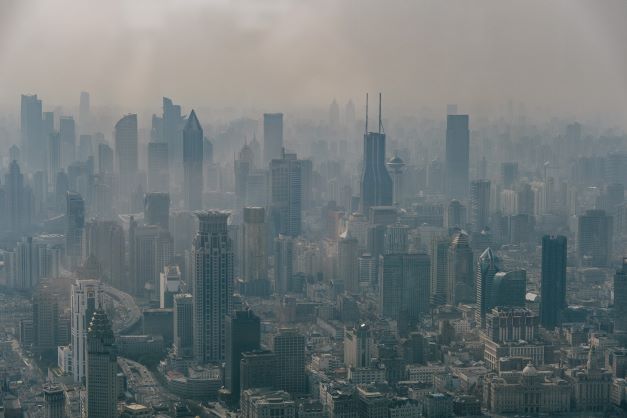Originally posted on: https://www.todaystopquestions.com/air-pollution-in-new-york-city-indoor-and-outdoor-air-quality-issues/
Compared to any other state in the country, New York State consumes the most fossil fuels in its residential and commercial buildings. According to the New York Department of Health and Mental Hygiene, air pollution is one of the biggest environmental threats to New Yorkers. In fact, 6% of all deaths occurring in New York City neighborhoods are due to air pollution and poor air quality. Air pollution affects both the poor and the rich since we are all breathing the same air, but studies have shown that those in low-income neighborhoods suffer the most pollution-induced health problems. Even with reduced emissions and more stringent air quality regulations, New York still faces an air quality issue.
Air Pollution in New York City
In both residential and commercial buildings, space and water heating appliances are used (furnaces, boilers, etc.) that burn gas or oil to produce heat. The burning of these fuels for space and water heating accounts for almost 40% of New York City’s total greenhouse gas emissions. These heating appliances emit many dangerous pollutants into the air, which includes fine particulate matter (PM2.5), oxides of nitrogen and sulfur (NOx and SOx), volatile organic compounds, and ammonia. These air pollutants can lead to asthma attacks, hospitalizations, and even death.
A study conducted in 2021 found that the pollution caused by fuel combustion in commercial and residential buildings in New York State led to approximately 1,940 premature deaths and added a total of $21.7 billion to the state’s healthcare budget in 2017. New York City was found to account for the majority of this, bringing in a whopping $12.5 billion in healthcare costs and 1,114 premature deaths. These statistics are also likely underestimates, as it is impossible to truly quantify the health impacts of air pollution.
How Does Air Pollution Affect Health?
When one breathes in contaminated air, the pollutants can enter into the bloodstream. A lot of people fail to think about how air pollution affects human health and only think about it as an environmental concern. In reality, air pollution is a multi-faceted issue that causes devastating affects not only to the planet, but to those living on it as well. According to the World Health Organization, 9 out of 10 people breathe polluted air, leading to over 7 million deaths each year. Just because you can’t see the pollution in the air, doesn’t mean it’s not there and it’s not negatively impacting your health.
There are many health complications that can be caused by air pollution, even in the healthiest of people. Breathing in polluted air puts you at a higher risk for asthma and other respiratory illnesses. With most of the pollutants in the air being carcinogens, breathing this dangerous air can put you at a higher risk for cancer. Even in healthy people, contaminated air can cause coughing and wheezing, along with damage to the immune, endocrine, and reproductive symptoms. If a pregnant woman is exposed to air pollution from a car exhaust, studies have shown that it can alter the structure of the fetus’s chromosomes and can increase their risk for developing cancer and a variety of birth defects. High levels of particle pollution have also been shown to lead to higher incidences of heart problems.
Studies have found that the most dangerous of all air pollutants is particulate matter that is smaller than 2.5 millionths of a meter, which is more commonly known as PM2.5, and is an umbrella term for all solid or liquid particles of that size that are released into the air. These specific particles are released into the air every time fuel is burned. These particles are so small that they can only be observed through a microscope, so the naked human eye can’t see it. These particles are mostly made up of sulfate, nitrates, ammonia, and black carbon, all of which can cause a multitude of health issues, ranging from burning eyes all the way to the exacerbation of blindness and cancer. The main source of PM2.5 is traffic, especially buses and large diesel trucks. People who live in and around New York City airports are very prone to PM2.5 exposure due to the influx of cars transporting travelers and the emissions coming from the planes.
New York Indoor Air Quality
Unfortunately, poor outdoor air quality isn’t the only cause for concern. Poor indoor air quality can also cause a variety of health issues and New Yorkers aren’t immune. Poor indoor air quality can be caused by a variety of things, including tobacco smoke, mold, pollen, allergens from cats, dogs, mice, dust mites, and cockroaches, smoke from fireplaces and woodstoves, formaldehyde in building materials, textiles, and furniture, carbon monoxide from gas furnaces, ovens, and other appliances, household products like cleaners and bug sprays, and outdoor air pollution.
According to the World Health Organization, household air pollution was responsible for approximately 3.2 million deaths per year in 2020, which includes the premature death of over 237,000 children under the age of 5. Since women and children are often the ones responsible for household chores such as cooking and cleaning, they face the greatest health burden from this poor air quality. Poor indoor air quality can lead to noncommunicable diseases like strokes, ischaemic heart disease, chronic obstructive pulmonary disease (COPD), and lung cancer.
With the U.S. Environmental Protection Agency stating that indoor levels of pollutants may be 25-100 times higher than outdoor pollution levels, it is so important to have your indoor air quality checked by an experienced professional. An experienced air quality testing professional can determine whether or not there are dangerous levels of any pollutants in your home by testing for volatile organic compounds, radon, carbon monoxide, off-gassing from furniture or carpets, and particles from wood-burning stoves and furnaces.
There are also steps you can take to improve your household’s indoor air quality. You can open windows to allow fresh air flow (unless you have asthma triggered by outdoor pollution or pollen), clean often to eliminate dust, pet fur, and other allergens, take precautions to control mold and pests, and do not smoke (especially indoors). If you think poor indoor air quality is negatively impacting your health, don’t wait until it’s too late to rectify the problem.



